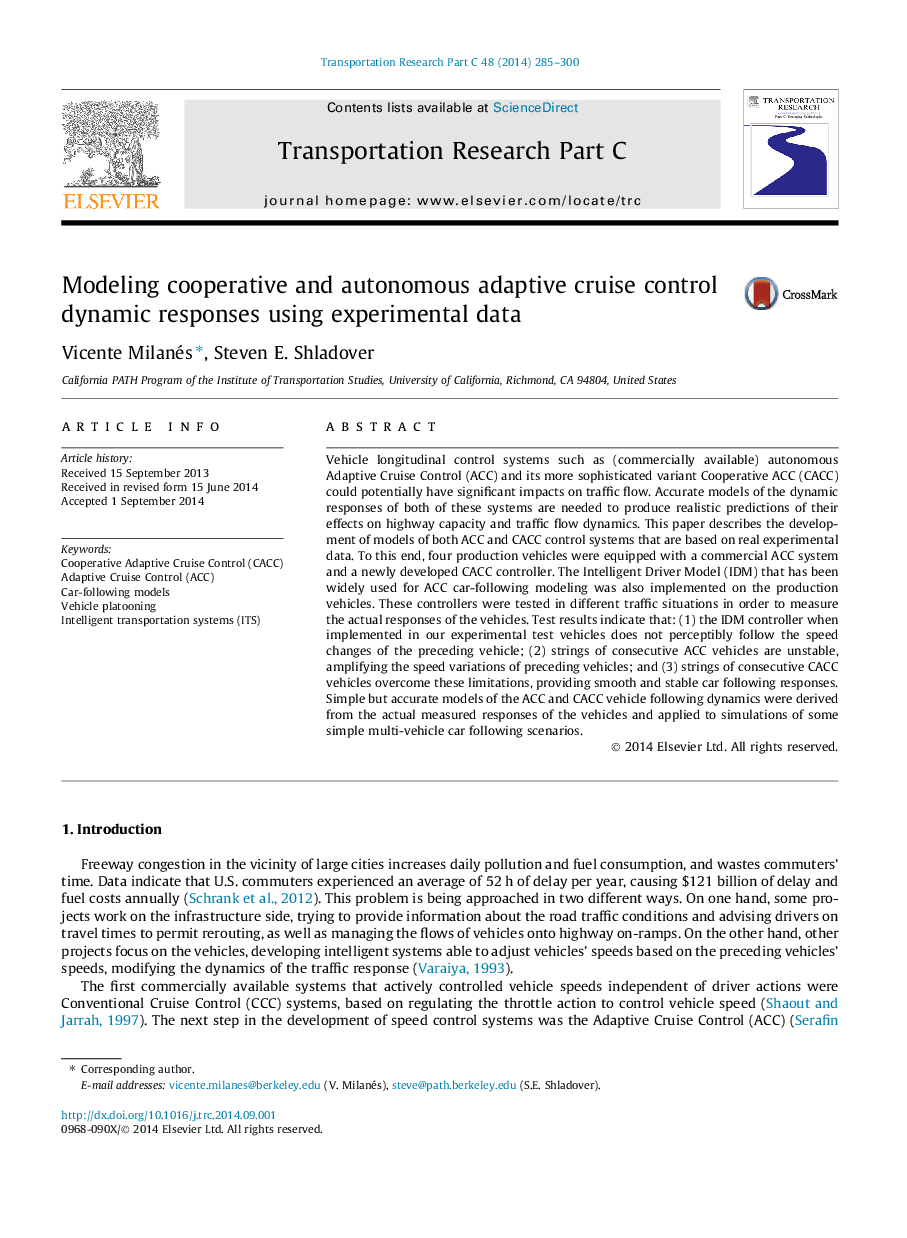| Article ID | Journal | Published Year | Pages | File Type |
|---|---|---|---|---|
| 6936990 | Transportation Research Part C: Emerging Technologies | 2014 | 16 Pages |
Abstract
Vehicle longitudinal control systems such as (commercially available) autonomous Adaptive Cruise Control (ACC) and its more sophisticated variant Cooperative ACC (CACC) could potentially have significant impacts on traffic flow. Accurate models of the dynamic responses of both of these systems are needed to produce realistic predictions of their effects on highway capacity and traffic flow dynamics. This paper describes the development of models of both ACC and CACC control systems that are based on real experimental data. To this end, four production vehicles were equipped with a commercial ACC system and a newly developed CACC controller. The Intelligent Driver Model (IDM) that has been widely used for ACC car-following modeling was also implemented on the production vehicles. These controllers were tested in different traffic situations in order to measure the actual responses of the vehicles. Test results indicate that: (1) the IDM controller when implemented in our experimental test vehicles does not perceptibly follow the speed changes of the preceding vehicle; (2) strings of consecutive ACC vehicles are unstable, amplifying the speed variations of preceding vehicles; and (3) strings of consecutive CACC vehicles overcome these limitations, providing smooth and stable car following responses. Simple but accurate models of the ACC and CACC vehicle following dynamics were derived from the actual measured responses of the vehicles and applied to simulations of some simple multi-vehicle car following scenarios.
Keywords
Related Topics
Physical Sciences and Engineering
Computer Science
Computer Science Applications
Authors
Vicente Milanés, Steven E. Shladover,
